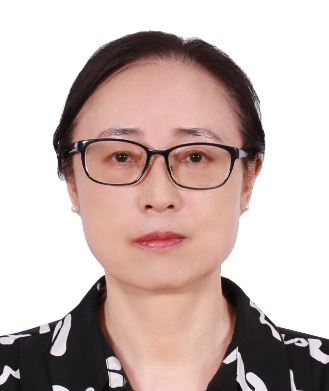
Assoc. Prof. Sansanee Auephanwiriyakul
Chiang Mai University, Thailand
Speech Title: Fuzzy Set Theory in Human Robot Communication and Robot Navigation System
Abstract: One of the popular theories used in data analysis is Fuzzy set theory, an extension of the classical set introduced by Lotfi Zadeh in 1965. Since then, there are many theories and applications developed based on Fuzzy set theory. One of the algorithms developed based on Fuzzy Set theory is the fuzzy vector (vector of fuzzy numbers) analysis. This can be applied in a human-robot communication and a robot navigation system. In this talk, we will talk on the communication between human and robot. Then the robot navigation and obstacle avoidance will be discussed.
In order to communicate on the direction between human and robot, one can use a rough hand-drawn map indicating the path from the start point to the end point. One can then create a graphic user interface and translate the route direction into linguistic description using fuzzy vector analysis. Finally, the movement command for each important point is generated.
In the end of the talk, we will describe how a robot finds a safe path when it moves according to the generated path in a navigation system among static and dynamic obstacles in an uncertain environment using fuzzy vector analysis.
BIO: Sansanee Auephanwiriyakul (S’98–M’01–SM’09) received the B.Eng. (Hons.) degree in electrical engineering from the Chiang Mai University, Thailand (1993), the M.S. degree in electrical and computer engineering and Ph.D. degree in computer engineering and computer science, both from the University of Missouri, Columbia, in 1996, and 2000, respectively. After receiving her Ph.D. degree, she worked as a post-doctoral fellow at the Computational Intelligence Laboratory, University of Missouri-Columbia. She is currently an Associate Professor in the Department of Computer Engineering and a deputy director of the Biomedical Engineering Institute, Chiang Mai University, Thailand. Dr. Auephanwiriyakul is a senior member of the Institute of Electrical and Electronics Engineers (IEEE). She is an Associate Editor of the IEEE Transactions on Fuzzy System, the IEEE Transactions on Neural Networks and Learning Systems, IEEE Computational Intelligence Magazine, IEEE Transactions on Artificial Intelligence, Engineering Applications of Artificial Intelligence, Engineering Applications of Artificial Intelligence, Computers and Electrical Engineering, and ECTI Transactions on Computer and Information Technology. She was a general chair of several major conferences including IEEE International Conference on Computational Intelligence in Bioinformatics and Computational Biology (CIBCB 2016) and IEEE International Conference on Fuzzy Systems 2024. And she will be a general co-chairs of the IEEE World Congress on Computational Intelligence (WCCI) 2026 (IEEE International Conference on Fuzzy Systems 2026). She was also a Technical Program Chair, Organizing Committee in several major conferences. She is also a member of several important IEEE CIS technical committees. She is now taking a role of the IEEE CIS VP-member activities for the term of 2025 – 2026.

Dr. Liming Zhang
University of Macau, China
Speech Title: A New Type of Self-supervised Learning Method Based on Mathematical Principle for Medical Image Segmentation
Abstract: In recent years, data-driven deep learning networks have achieved great success in medical image segmentation. However, these deep learning solutions often require large amounts of labeled data samples. This is especially difficult in the field of medical image processing, where well-annotated medical data is expensive and time-consuming. In literature, mathematical principles have demonstrated very good performance in unsupervised feature extraction. This paper introduces the recently developed mathematical theory – stochastic adaptive Fourier decomposition (SAFD) into the design of deep network to implement non-data-driven deep learning for medical image segmentation. The principle is to first use SAFD to self-supervised learn the convolution kernels of each layer, and then perform convolutions on the training images to extract deep features. Finally, a classifier is used together with one labeled training data for segmentation. Two non-pre-trained single-labeled data based training designs are proposed, including training with one labeled or one labeled and four unlabeled images. Extensive experiment results on six datasets from different modalities demonstrate the superiority of our proposed methods over other compared stateof-the-art fully supervised, semi-supervised and unsupervised methods, including recent popular Segment Anything Model (SAM) series. In addition, further generalization experiments in the same domain verify the robustness of the proposed method.
BIO: Liming Zhang received the B.S. degree in Computer Software at Nankai University, China and M.S. degree in Signal Processing at Nanjing University of Science and Technology, China. She received her PhD degree in image processing at University of New England, Australia. She is currently an assistant professor in Faculty of Science and Technology, University of Macau. Her research interests include Computer vision, Image processing, Artificial intelligence, Machine learning, and Deep learning. She has published over 100 papers, including IEEE Transactions on Image Processing, IEEE Transactions on Signal Processing, CVPR, ect. The main contribution lies on new image and signal processing methodology – adaptive Fourier decomposition (AFD)-based image processing methods and new deep network development. The image and video compression results based on stochastic AFD (SAFD) exceed the current international image and video compression standards JPEG, JPEG2000, MPEG, and also exceed the compression results of the popular deep networks. SAFD-based deep networks also perform well in alleviating the scarcity of training data.